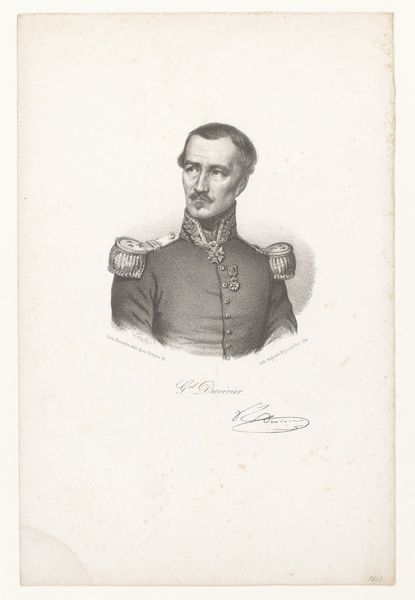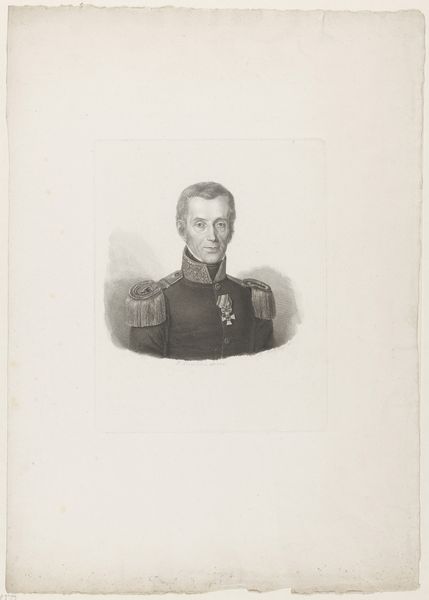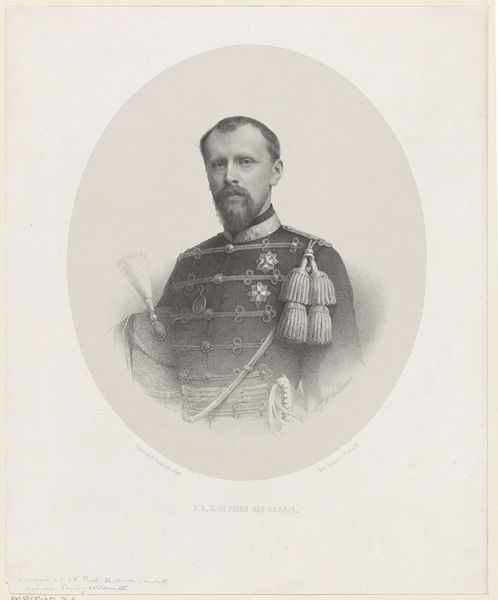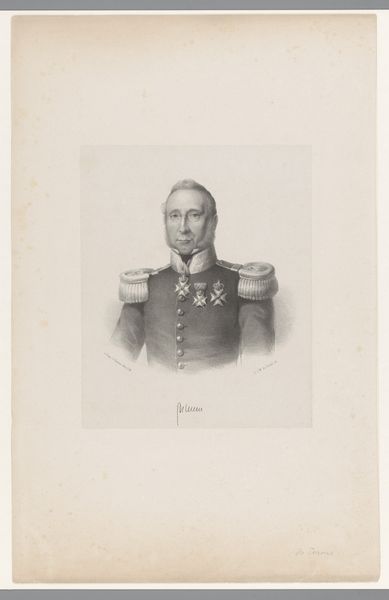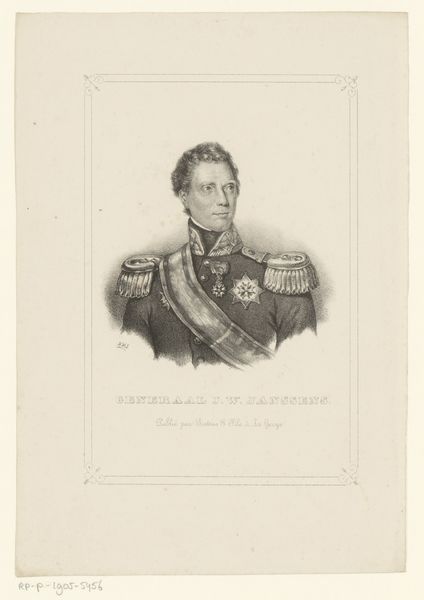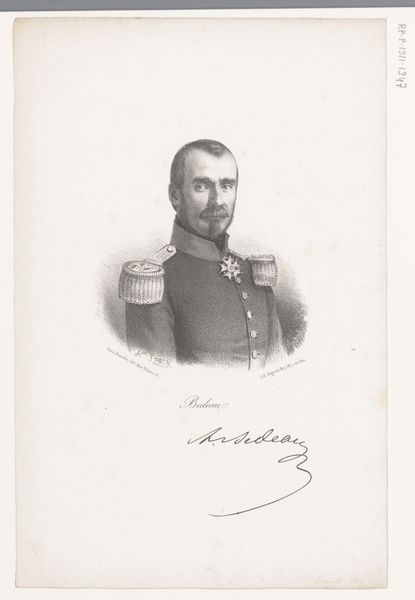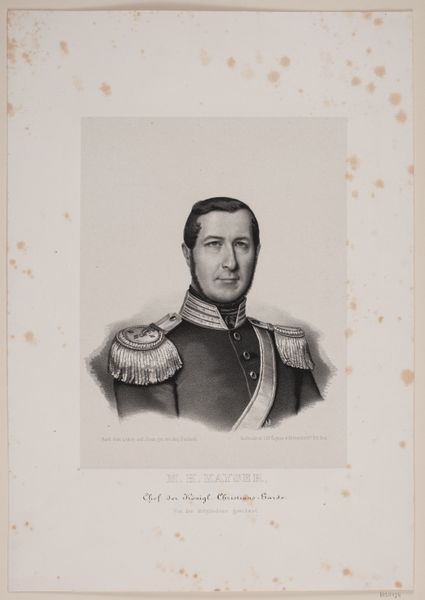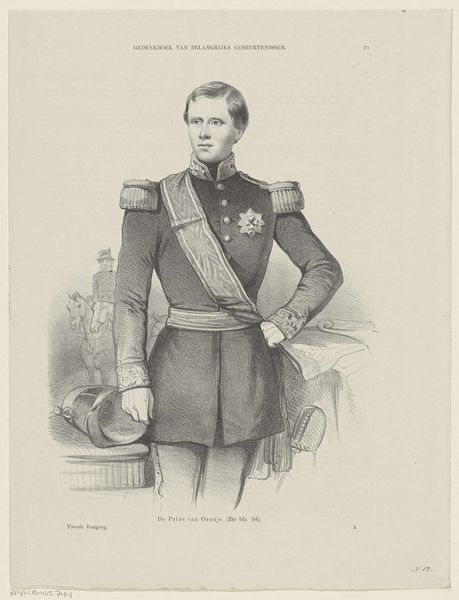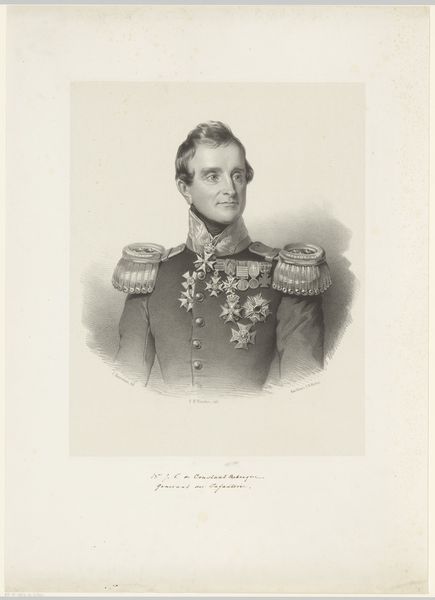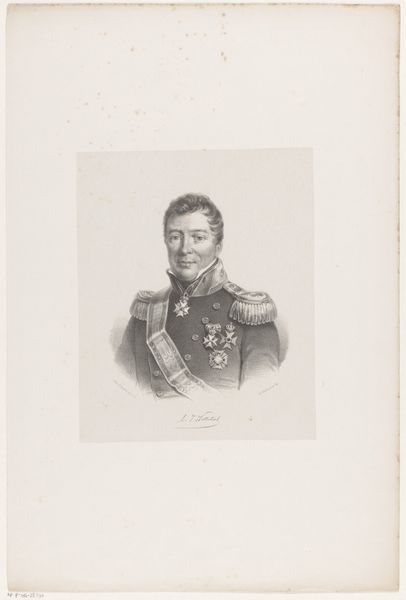
drawing, pencil
#
portrait
#
drawing
#
pencil sketch
#
pencil
#
academic-art
#
realism
Dimensions: height 191 mm, width 122 mm
Copyright: Rijks Museum: Open Domain
Dirk Jurriaan Sluyter rendered this portrait of Willem, Prince of the Netherlands, using the technique of lithography. Here, the texture and character of the lithographic stone – a fine-grained, porous material – played a crucial role. The artist would have drawn directly onto the stone's surface with a greasy crayon, then chemically treat it so that only the drawn areas would accept ink. This allowed for the creation of subtle tonal variations and fine lines, evident in the delicate shading of Willem's face and uniform. The process is one of transferring an image from one surface to another, and it democratized printmaking because of its speed, convenience and accuracy. The lithographic process, born from industrial innovation, allowed for the relatively quick reproduction of images. Considering the social context, this portrait likely served as a piece of royal propaganda, aimed at cultivating an image of leadership through widespread circulation. The work involved in producing many copies would have been divided amongst a print shop team, each playing a role in the image's dissemination. By examining the materials and processes involved, we can appreciate how this print reflects both artistic skill and the mechanics of power within a rapidly changing society.
Comments
No comments
Be the first to comment and join the conversation on the ultimate creative platform.

